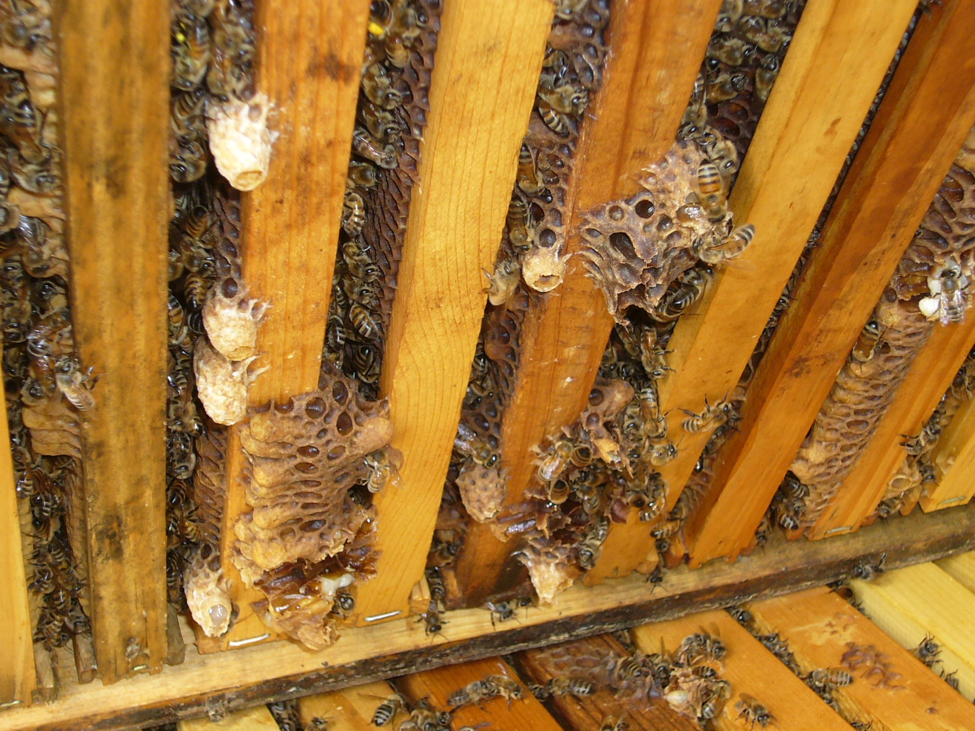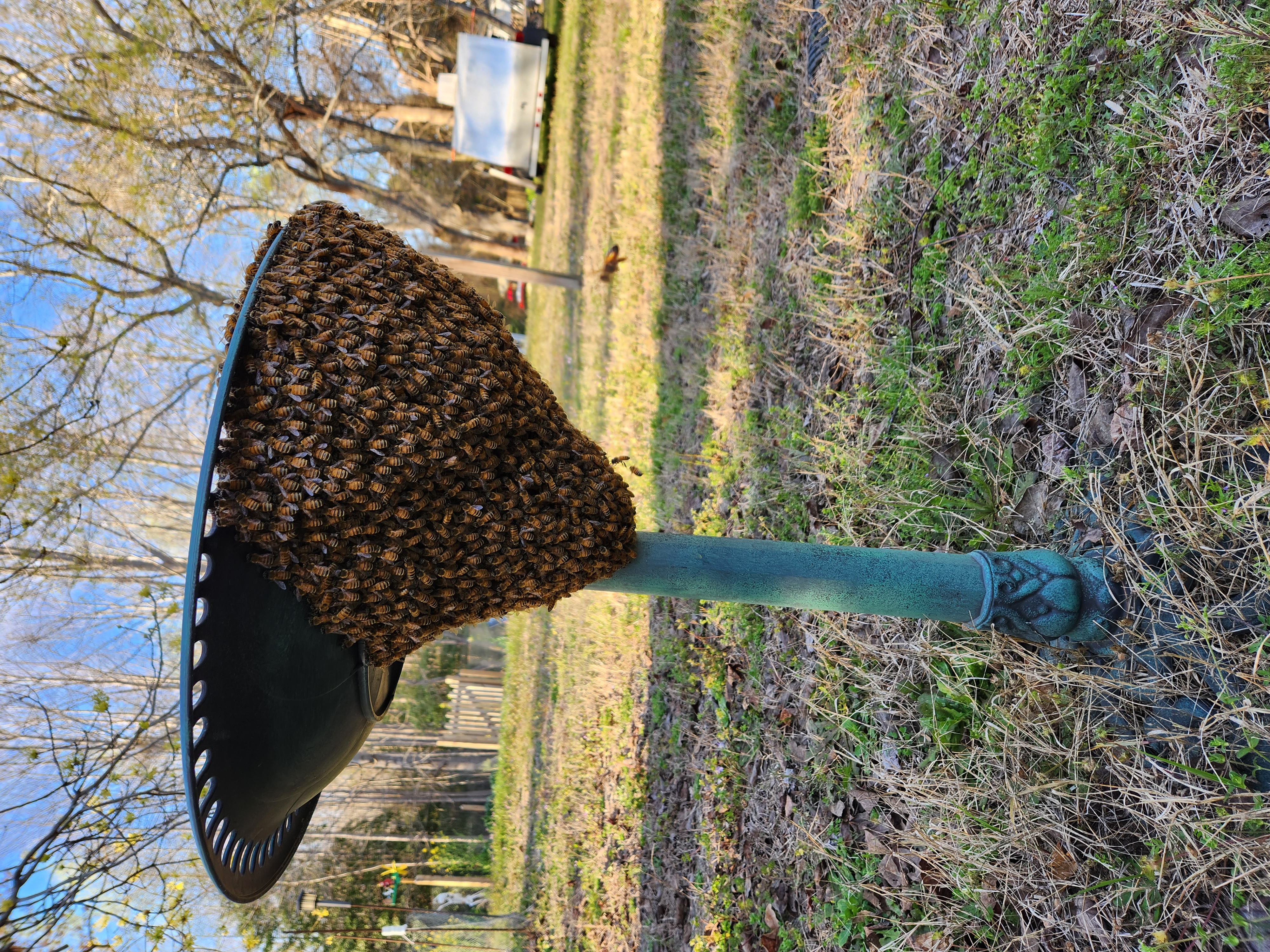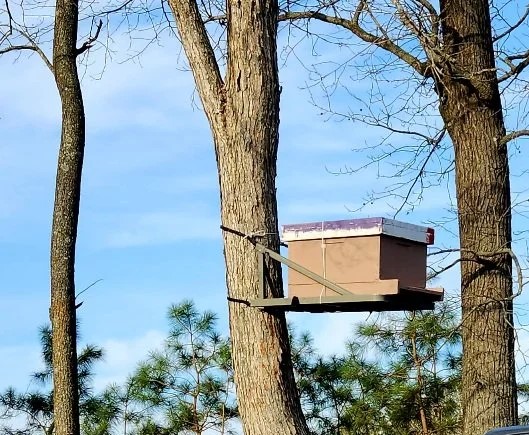What Should I Be Doing in My Apiary This Month? – April
go.ncsu.edu/readext?1066145
en Español / em Português
El inglés es el idioma de control de esta página. En la medida en que haya algún conflicto entre la traducción al inglés y la traducción, el inglés prevalece.
Al hacer clic en el enlace de traducción se activa un servicio de traducción gratuito para convertir la página al español. Al igual que con cualquier traducción por Internet, la conversión no es sensible al contexto y puede que no traduzca el texto en su significado original. NC State Extension no garantiza la exactitud del texto traducido. Por favor, tenga en cuenta que algunas aplicaciones y/o servicios pueden no funcionar como se espera cuando se traducen.
Português
Inglês é o idioma de controle desta página. Na medida que haja algum conflito entre o texto original em Inglês e a tradução, o Inglês prevalece.
Ao clicar no link de tradução, um serviço gratuito de tradução será ativado para converter a página para o Português. Como em qualquer tradução pela internet, a conversão não é sensivel ao contexto e pode não ocorrer a tradução para o significado orginal. O serviço de Extensão da Carolina do Norte (NC State Extension) não garante a exatidão do texto traduzido. Por favor, observe que algumas funções ou serviços podem não funcionar como esperado após a tradução.
English
English is the controlling language of this page. To the extent there is any conflict between the English text and the translation, English controls.
Clicking on the translation link activates a free translation service to convert the page to Spanish. As with any Internet translation, the conversion is not context-sensitive and may not translate the text to its original meaning. NC State Extension does not guarantee the accuracy of the translated text. Please note that some applications and/or services may not function as expected when translated.
Collapse ▲The last two months was the beginning of the beekeeping season, whereas April is the heart of beekeeping in North Carolina. In late February and March, as the weather warmed up and plants began to bloom, bees took full opportunity to collect those resources to build their populations. Now, with boxes becoming crowded and drones being plentiful, honey bee colonies are doing what they instinctively do—split off the old colony and start a new colony in a new location, better known as swarming.  Beekeepers have tried for a long time to stay ahead of this process and to deter the bees from swarming, but it is hard to overcome their natural drive to reproduce.
Beekeepers have tried for a long time to stay ahead of this process and to deter the bees from swarming, but it is hard to overcome their natural drive to reproduce.
There are a few things beekeepers can do to deter swaming, but it is constant work to try to stay one step ahead of the bees. The most obvious technique to prevent swarming is to make certain the bees have enough space so as not to be too crowded. All the boxes that you built and painted over the winter will now come in very handy! A common question is ‘when do I add the next box?’ There is no single correct answer, but the logical one is before the previous box gets full. Some beekeepers will add the next box when there are still 2 or 3 frames untouched in the previous box. The thought is that this empty space will allow the colony to grow and may even stimulate them to work harder to fill up the unused space. If there is still a frame left to be drawn out on the outer edge, this frame may be moved over a space or two toward the center and place the drawn one on the outer edge.  The bees will be more likely to begin using this frame if it is in between two frames that are already in use by the bees. Another option is to place a few frames from the crowded box into the new box that you are adding. This will encourage the bees to go up into that box and start using it immediately. New frames can then be added to the original box to alleviate the crowdedness. Alternating the new frames with the already populated frames is a term called “checkerboarding” and is an effective approach for swarm prevention.
The bees will be more likely to begin using this frame if it is in between two frames that are already in use by the bees. Another option is to place a few frames from the crowded box into the new box that you are adding. This will encourage the bees to go up into that box and start using it immediately. New frames can then be added to the original box to alleviate the crowdedness. Alternating the new frames with the already populated frames is a term called “checkerboarding” and is an effective approach for swarm prevention.
If the colony already has several boxes stacked up, another common method to prevent swarming is to make a split from the colony. Remove some of the frames, along with the adhering bees, and place them into a new box. It is a good idea to take some brood and at least one good honey frame to ensure they will not starve. Although helpful to find the queen prior to splitting, it is not required. If there are frames in both units with eggs and small larvae, the unit without the queen will have the resources needed to make a new one. It will be evident in just a few days which unit was queenless because of the new queen cells being produced.
No matter how hard we try, there will still be swarms of bees. For beekeepers, swarms can also be a good thing—free bees! Strategically place swarm traps now so that if there is a swarm (hopefully from your neighbor’s colonies) it may move into the box that is available.  There are many kinds of swarm traps on the market, but an empty hive with some old comb will suffice. There are also lures that may be purchased, but often, the smell of the old comb is enough to entice a swarm to move in. These bees can then be added to the apiary and treated as any other colony using best management practices.
There are many kinds of swarm traps on the market, but an empty hive with some old comb will suffice. There are also lures that may be purchased, but often, the smell of the old comb is enough to entice a swarm to move in. These bees can then be added to the apiary and treated as any other colony using best management practices.
If your goal is to make honey, now is the time to put supers on. If you successfully stored supers with drawn comb from last year, you could add these to your hives now. With drawn comb, you may add several at a time without any trouble. If you are starting with foundation, one super at a time is recommended. When all but a few frames have been drawn out, the next super of foundation may be added. When one super is full, and it is time to add the next one, you can either add it above (“top supering”) or below (“bottom supering”) the previous one. That is a personal choice and there are pros and cons to both methods.
For those that are just getting started, or starting over this year, packages are being installed and nucs are becoming available this month. Although this is being started as a new colony, it may have arrived to your apiary with mites, so it is always a good idea to do an initial mite check to be certain the numbers are below threshold. For colonies that overwintered, it is also good to get an initial count of the mite population before the nectar flow. Apart from Formic Acid, mite treatments need to be finished prior to adding supers, so it is good to get an early start on monitoring the mites.
April is an exciting time in the apiary for all beekeepers, but especially for new beekeepers. Having completed a new beekeeper’s class and acquiring the necessary equipment to start the hobby of beekeeping, this is the time of year that packages arrive and nucs are being distributed. For the first time beekeeper receiving their first package of bees, this is the most exciting time of year. For seasoned beekeepers, it may not seem like much to install packages since you have done it many times now but think back to how nervous you were that first time you received your package of thousands of stinging insects. Take time to mentor a new beekeeper and help them install their first packages to ensure a successful start to their new endeavor.
Spring is a great time to be a beekeeper so enjoy it.


